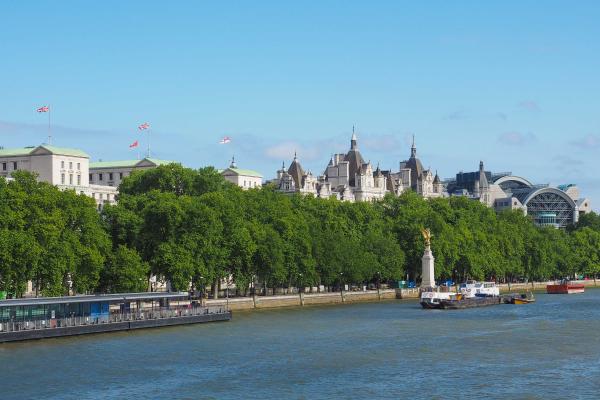The tragedy that occurred in June 2017 was completely avoidable. 5 years on, there are still important lessons to learn.
On June 14th 2017, the Grenfell Tower fire claimed 72 lives and reminded the world of the perils and challenges of high-rise building fire.
Resilience First, in partnership with the Fire Protection Association, brought together a panel of industry experts over a live session discussing the outcomes of Phase 2 of the inquiry, the revised regulatory landscape and the implications for businesses. What does the Grenfell Tower Inquiry mean for business from a regulatory and advisory standpoint?
Caroline Brosnan, Senior Associate with Russell-Cooke solicitors who represents some of those affected by the fire, opened the discussion: “The Grenfell ‘Web of Blame’ may be familiar to you. It was prepared by the inquiry to show how everyone is blaming everyone else. You need to try and make sure in your job that you don't get your company onto this type of blame list.”
“Make sure that in your company you support and foster an environment where questions are asked. You need to have the strength and the tenacity to make sure that you ask those questions again and again if no one answers them for you.”
“Procurement is a brilliant opportunity to do your due diligence. Procurement is where you have an opportunity to get to know the person that you are going to be instructing to do this job and whether they have the right skills, whether they have the right support in place if there are any problems, and how you are going to fix things.”
“It is important to try and avoid short-term thinking and short-term goals as a result because there will be hidden costs.”
Howard Passey, Director of Operations at the Fire Protection Association discussed the changes underway in the regulatory environment. “We had building regulations, so we knew how to build things, we knew how to refurbish things effectively. We have plenty of guidance associated with that. Grenfell clearly opened a massive can of worms and was a real wake up call for the construction and fire safety industries.”
“So many things went wrong that there has been a root and branch review of everything we do. There is a whole raft of new pieces of legislation, new guidance documents, new approaches to the building safety regime in general. It's going to have a knock-on effect for each and every one of us engaged in fire safety or engaged in dealing with these kinds of premises.”
“Are we getting our decisions right in terms of where we're focusing on risk? Should we not be more focused on the risk to occupants than just on building height? Are we taking the right approach?”
Finally, Tom Roche, Assistant Vice President with the insurers FM Global, considered the lessons for business resilience from the Grenfell inquiry.
“People delegated lots of decisions and thoughts and requirements to a number of different people, but there didn't seem to be one controlling mind that seemed to be on top of all the decisions. What's clear to me from watching people who are good at managing risk, they're very clear that they have ownership of it.”
“One of the clearest messages to business leaders is this point: the ball is with you. You have to be clear what risk you are willing to accept, which you're not willing to accept, what you're going to do about it, and who will you ask to take it on, and how you will verify that.”
“Trust, but verify. Everybody trusted that somebody else was taking care of something, but there was very little verification that it was actually taking place.”
Summary:
There was a complex 'web of blame' that emerged from the inquiry, organisations should minimise the risk of being caught in a similar cycle of blame. Organisations need to foster an environment that encourages participants to be curious and persistent, asking questions and following-up until an adequate response is received. Procedural aspects are equally important to fully assess the capability of service providers and ensure that service offerings are assessed for all outcomes - not solely profit or cost. Litigation can expose all decision making in intimate detail, and often enlists the record-keeping of counterparties if the records of a firm are found wanting. Considering such scenarios is a good way for businesses to self-audit their processes and governance.
The Grenfell inquiry exposed multiple failings with the UK fire and buildings safety regulatory environment, resulting in a detailed review and update of the legislation and regulatory regime. A new regulatory body now oversees the safety of all buildings. An overhaul of primary and secondary legislation was undertaken, targeting safety and emergency planning for tall and high-risk buildings, with specific attention on the assignment of responsibility and establishing competence across the spectrum of building fire safety - two areas found to be particularly lacking in previous legislation. While the updated legislative environment is certainly more complex, it has significantly improved the overall safety guidance.
Businesses need to consider whether the regulatory environment, the legal minimum, achieves the outcome that a business desires. Regulatory compliance does not necessarily equate with active risk management - understanding and assessing risks and consequences from all perspectives and clear ownership of responsibility at appropriate levels within the organisation.
Changing a regulatory framework can be slow. Legislation although more robust than ever, is not effective enough to prevent another tragedy on its own. Businesses should view legislative requirements as the bare minimum, and ensure they are implementing procedures and fostering a culture that generates a sense of ownership and puts fire safety at the forefront for all employees.
Watch our webinar here.
Picture by Loz Pycock



